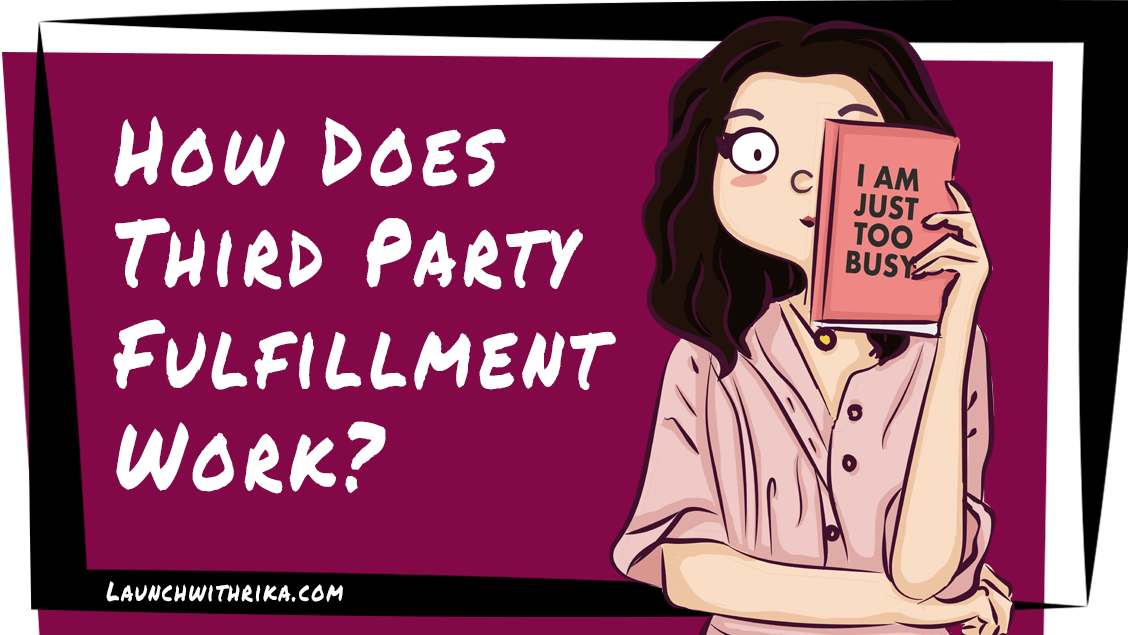As a business owner, you might be spending a lot of time on packaging and shipping, when you’d rather be working on marketing. Do you keep all of your stock in your home or do you go with third party fulfillment, and what does that even mean? In this post, I’ll break it down into simple terms of what third party fulfillment is, as well as what the pros and cons of it are, and how to know if it’s right for your business.
- What is Third-Party Fulfillment and How Does it Work?
- Third-Party Fulfillment Benefits
- Third-Party Fulfillment Drawbacks
- Third-Party Fulfillment Companies Examples
What Is Third-Party Fulfillment (Tpf) and How Does it Work?
While the name itself might seem complicated, TPF is actually very simple. It means that you will be working with a logistics company and they will handle all of your warehousing and fulfillment of your orders. You might also hear this called Third Party Logistics, TPL or 3PL.
If you’re accustomed to working solo in your business then you just have the manufacturer, yourself and your customers. With TPF, we add in one more party, the shipper who will get the product to your end customer. A Third-Party Fulfillment service will hold all your products. Once your customer places an order, the TPF provider will receive the request and will package and ship the order directly to your customer.
If you find yourself with a quickly growing business and are frustrated that you’re spending all of your time fulfilling orders, then TPF might be exactly what you need. This way you can spend your time on areas that are necessary to move your business forward like marketing and innovation.
When Tpf Might Not Be Right for You
Now, if you’re brand new and have low sales, you might want to hold off on TPF. As long as you can handle packaging and fulfillment well without stagnating your business, you might want to continue doing it yourself. Or, if you have very complicated packaging needs or requirements, TPF might not be the ideal fit. Keep in mind that TPF will cut into your revenue and if your margins are already slim, this might not work for you.
Third-Party Fulfillment Benefits
Without a doubt, there are certainly some clear benefits including:
- No staff/employees
- Efficient
- Decreased workload
This allows you to focus on running your business, rather than on packaging and order fulfillment.
Third-Party Fulfillment Drawbacks
Of course, there are also disadvantages to consider including:
- Loss of some control
- Time spent finding the right fulfillment provider
- Higher costs
It’s important to remember that while you’ll save time in the long-term, it will require time and effort on your part to choose and get up and running with a TPF company.
Examples of Third Party Fulfillment Companies
As a business owner, you have more choices than you can imagine for choosing a TPF company. Some of them are more open with pricing, but often you will need to contact the company directly to receive specific pricing info. Here are a few examples to help you get started.
ShipBob
ShipBob is ideally suited for small commerce businesses, startups, or crowdfunded programs. Customers tend to appreciate that their pricing is one of the most straightforward in the industry. They also offer great analytics and reporting.
With ShipBob, pricing starts at $5 for a bin per month, up to $40 a month for a pallet. In addition to that, you will also need to pay a $25 receiving fee for the first two hours and $35 per hour for each hour after.
Rakuten Super Logistics
If you have a large customer base in the US and fast shipping is a must, then Rakuten might be the ideal fit for you. They claim that they can ship orders within one business day and that most US orders are delivered within 1-2 days. They also guarantee 100% accuracy on all orders.
You can go here to get a quote based on your orders per month and the number of items you have.
Here Are a Few Other TPF Companies to Check Out
If you’re struggling to keep up with orders or find that time spent packaging is keeping you from running your business, TPF would probably be a good next step for you and your business. After the initial work, you can then go back to doing what you do best, running your business. If you’re not quite ready for TPF, now you know what to look for once you want to take the leap in the future.







